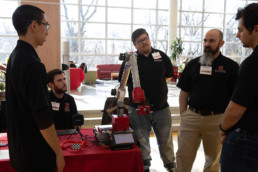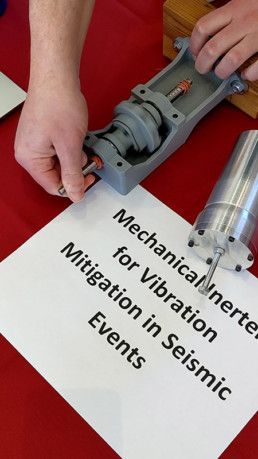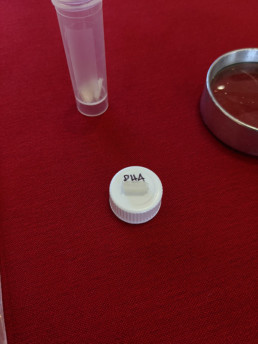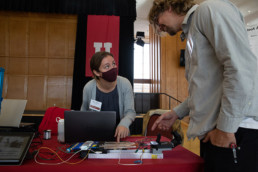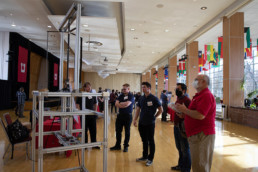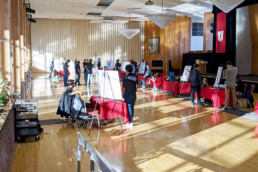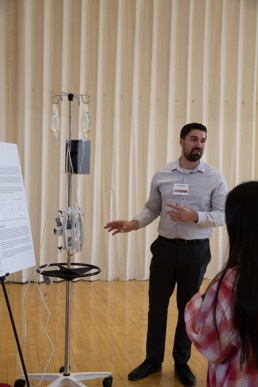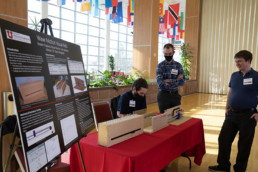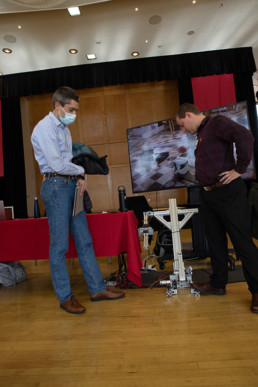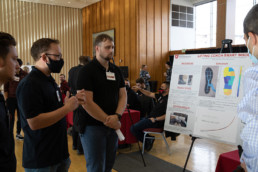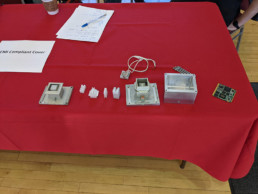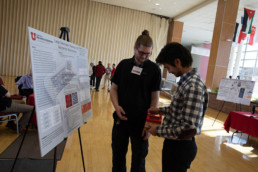Design Day - Spring 2021
Design Day is an opportunity to share our Senior Design Showcase with the public. Seniors work in groups with faculty to design and test projects.
Senior Design Projects
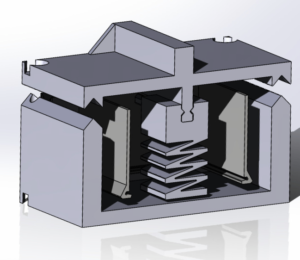 Current EMI covers or septums sufficiently shield electrical components on circuit card assemblies but require numerous fasteners in order to sufficiently seal compartments against electro-magnetic leakage when circuitry is in use and subject to vibration and thermal stresses. In addition, gap filler material is used between the covers or septums and high heat dissipating electrical devices for improved operating junction temperatures. A compliant cover that provides a thermal interface that would allow less fasteners and eliminate gap filler would be beneficial for lowering manufacturing costs. This design will utilize compliant mechanisms that are capable of electrical and thermal conductance through a revolutionary copper metallization process.
Current EMI covers or septums sufficiently shield electrical components on circuit card assemblies but require numerous fasteners in order to sufficiently seal compartments against electro-magnetic leakage when circuitry is in use and subject to vibration and thermal stresses. In addition, gap filler material is used between the covers or septums and high heat dissipating electrical devices for improved operating junction temperatures. A compliant cover that provides a thermal interface that would allow less fasteners and eliminate gap filler would be beneficial for lowering manufacturing costs. This design will utilize compliant mechanisms that are capable of electrical and thermal conductance through a revolutionary copper metallization process.
Team: Will Carnell, Tom Carter, Jospeh Mckay, Franco Pinet, Emmett Schultz (lead)
Faculty Advisor: Dr. Kenneth d’Entremont, Jack Carrick
 There is a constant need to improve the safety of medical equipment in the United States. In response, our group identified the IV pole as a potential candidate for equipment in need of change. Our team has developed an IV pole-mounted power strip that attempts to solve one of these issues by providing power and managing excess cordage within the same footprint as existing power strips. This device supplies power to medical equipment and manages the different cords from the medical devices by providing knobs where the excess cord is easily stowed. The device was designed with time management at the forefront to reduce the time for medical staff to implement and complex sanitation routines. This solution provides a meaningful improvement over existing devices and facilitates an improved experience with IV poles for healthcare workers and patients.
There is a constant need to improve the safety of medical equipment in the United States. In response, our group identified the IV pole as a potential candidate for equipment in need of change. Our team has developed an IV pole-mounted power strip that attempts to solve one of these issues by providing power and managing excess cordage within the same footprint as existing power strips. This device supplies power to medical equipment and manages the different cords from the medical devices by providing knobs where the excess cord is easily stowed. The device was designed with time management at the forefront to reduce the time for medical staff to implement and complex sanitation routines. This solution provides a meaningful improvement over existing devices and facilitates an improved experience with IV poles for healthcare workers and patients.
Team: Hamam Alorami, Taylor Cook, Ryan Wilcox (lead), Austin Williams
Faculty Advisor: Dr. Andrew Merryweather
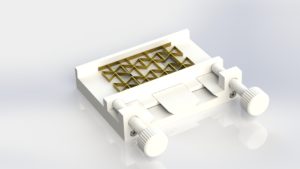 Metamaterials are composites that exhibit properties that do not occur naturally. Mechanical metamaterials are metamaterials that exhibit non-natural properties based solely on their geometry. They have limitless potential and applications. Recently, new classes of metamaterials including shape morphing metamaterials have exhibited functionalities in response to mechanical forces. This project is meant to exploit the functionalities of metamaterials in order to make them useful for real world applications
Metamaterials are composites that exhibit properties that do not occur naturally. Mechanical metamaterials are metamaterials that exhibit non-natural properties based solely on their geometry. They have limitless potential and applications. Recently, new classes of metamaterials including shape morphing metamaterials have exhibited functionalities in response to mechanical forces. This project is meant to exploit the functionalities of metamaterials in order to make them useful for real world applications
Team: Jake Hirst, Zane Kinkaid, Jonas Merrell, Jake Schauer (lead), Nolan Strauss
Faculty Advisor: Dr. Pai Wang
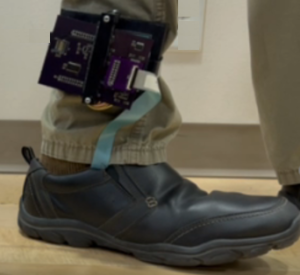 Work-related lower back pain contributes to lost productivity, reduced quality of life and costs billions of dollars a year for workers and their employers. A large contributor to this pain is injury from lifting heavy objects incorrectly. The “Lifting Coach” is designed to help workers avoid injury by providing on-the-job data about how they are moving and lifting. It consists of a shoe insole built with a layer of printed conductive material laid out across the insole. This printed material creates force sensing resistors which cover the area of the insole. As the user walks and lifts, the sensors change the voltage reading across the circuits in the electronics portion of the design. The microprocessor converts the voltage to a force and sends the data via Bluetooth to the user. This would allow the user to observe the distribution of forces in their feet as they work, ultimately teaching them to avoid situations which result in back injury.
Work-related lower back pain contributes to lost productivity, reduced quality of life and costs billions of dollars a year for workers and their employers. A large contributor to this pain is injury from lifting heavy objects incorrectly. The “Lifting Coach” is designed to help workers avoid injury by providing on-the-job data about how they are moving and lifting. It consists of a shoe insole built with a layer of printed conductive material laid out across the insole. This printed material creates force sensing resistors which cover the area of the insole. As the user walks and lifts, the sensors change the voltage reading across the circuits in the electronics portion of the design. The microprocessor converts the voltage to a force and sends the data via Bluetooth to the user. This would allow the user to observe the distribution of forces in their feet as they work, ultimately teaching them to avoid situations which result in back injury.
Team: Zack Anderson, Tayt Cooper (lead), Taylor Van Roosendaal, Justin Starr, Jacob Worthington
Faculty Advisor: Dr. Andrew Merryweather
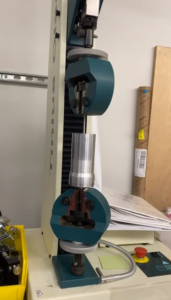 Modern day vibration mitigation systems are often made up of springs and dampers. These two components help control the velocity and displacement of a system. However, there are very few systems that incorporate any mechanical elements that control the acceleration of a system. These mechanical components go by the name of “Inerter”. The fundamental concept of the ball screw inerter is to convert linear motion to rotational motion, and store that energy in a flywheel. The storage of this energy can be used to effectively dampen vibrations.
Modern day vibration mitigation systems are often made up of springs and dampers. These two components help control the velocity and displacement of a system. However, there are very few systems that incorporate any mechanical elements that control the acceleration of a system. These mechanical components go by the name of “Inerter”. The fundamental concept of the ball screw inerter is to convert linear motion to rotational motion, and store that energy in a flywheel. The storage of this energy can be used to effectively dampen vibrations.
Team: Carlos Arce, Colin Armstrong, Francisco Guzman, Anthony Laubacher, Zach Martin (lead)
Faculty Advisor: Dr. Pai Wang
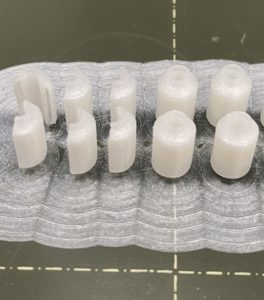 The goal of this project is the creation of a leak-proof nerve regeneration conduit that reliably stores and diffuses a drug at a controlled rate, utilizing commonly available additive manufacturing methods. A manufactured device can aid in nerve regeneration following a nerve injury by guiding regrowth into extant nerve architecture, helping to prevent permanent nerve damage. The project explores geometry, material, and performance of 3D printed nerve conduits.
The goal of this project is the creation of a leak-proof nerve regeneration conduit that reliably stores and diffuses a drug at a controlled rate, utilizing commonly available additive manufacturing methods. A manufactured device can aid in nerve regeneration following a nerve injury by guiding regrowth into extant nerve architecture, helping to prevent permanent nerve damage. The project explores geometry, material, and performance of 3D printed nerve conduits.
Team: Tanner Dixon, Abigail Fawbush (lead), Ryan Lundell, Stephen Morgan, Reid Rouse
Faculty Advisor: Dr. Bruce Gale
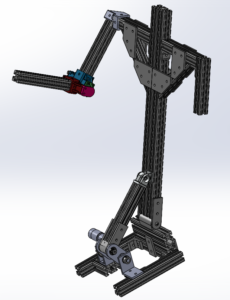 The Robot Rec room is a section of an interactive art exhibit (Dreamwalk). Our role in the project is to populate the room with 4 animatronics that perform actions to help tell the story of the room.
The Robot Rec room is a section of an interactive art exhibit (Dreamwalk). Our role in the project is to populate the room with 4 animatronics that perform actions to help tell the story of the room.
Team: Alex Best, Mathew James, Jack Montgomery (lead), Derek Mouser, and Robert Nievar
Faculty Advisor: Dr. Stephen Mascaro
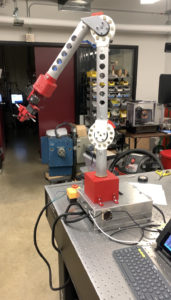 This 6 degree-of-freedom robotic arm will be used in a material testing laboratory. This arm is able to pick up and place material coupons into a hydraulic testing stand while recording the coupon’s geometry using computer vision. The user can interact with the robotic arm through voice commands as well as a graphical user interface.
This 6 degree-of-freedom robotic arm will be used in a material testing laboratory. This arm is able to pick up and place material coupons into a hydraulic testing stand while recording the coupon’s geometry using computer vision. The user can interact with the robotic arm through voice commands as well as a graphical user interface.
Team: Dalton Anderson, Pedro Correa, Keony Hong, Chad Jensen, Quinault Mackey (lead)
Faculty Advisor: Dr. Jacob Hochhalter
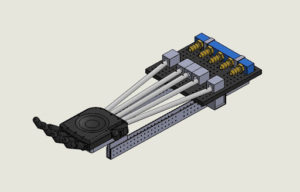 This project is focused on integrating Supercoiled Polymer (SCP) artificial muscle fibers into a robotic hand and designing a cooling system to improve the function and speed of the muscle fibers. The SCPs provide control using current to heat the fibers and compressed air to cool them. Potentiometers integrated in the 3D printed robot fingers allow for control of each individual finger position. This projects proves that the SCPs provide potential applications in many biorobotic applications with room for specialization.
This project is focused on integrating Supercoiled Polymer (SCP) artificial muscle fibers into a robotic hand and designing a cooling system to improve the function and speed of the muscle fibers. The SCPs provide control using current to heat the fibers and compressed air to cool them. Potentiometers integrated in the 3D printed robot fingers allow for control of each individual finger position. This projects proves that the SCPs provide potential applications in many biorobotic applications with room for specialization.
Team: Braden Foard, Jacob Kuoha, Tyler Starr, Claire Ticknor (lead)
Faculty Advisor: Dr. Stephen Mascaro
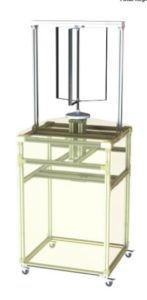 We are designing and improving the existing design of a vertical axis wind turbine that is more easily installable in urban environments than traditional large horizontal axis wind turbines by introducing maglev bearing systems and brakes.
We are designing and improving the existing design of a vertical axis wind turbine that is more easily installable in urban environments than traditional large horizontal axis wind turbines by introducing maglev bearing systems and brakes.
Team: Pierre Brossay, Robin Burgess (lead), Kyle Chipman, Kaylee Darke, Dallin Housley,
Faculty Advisor: Dr. M Metzger
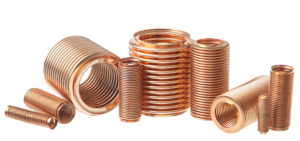 L3Harris, the industry sponsor of this project, has a need to protect sensitive electronic modules from harmful vibrations while also allowing the modules to dissipate heat. That is, they need a vibration isolation system that is able to simultaneously cool the module and protect it from overheating. Our solution is to use a configuration of modified metal bellows systems, often used in fuel lines, act as both a vibration isolator and a heat sink for the module. Through parameter and modification optimization using 3D modeling and Finite Element Analysis, we are able to configure a product that effectively isolates a payload from harmful vibration and maximizes thermal conductivity.
L3Harris, the industry sponsor of this project, has a need to protect sensitive electronic modules from harmful vibrations while also allowing the modules to dissipate heat. That is, they need a vibration isolation system that is able to simultaneously cool the module and protect it from overheating. Our solution is to use a configuration of modified metal bellows systems, often used in fuel lines, act as both a vibration isolator and a heat sink for the module. Through parameter and modification optimization using 3D modeling and Finite Element Analysis, we are able to configure a product that effectively isolates a payload from harmful vibration and maximizes thermal conductivity.
Team: Abdulaziz Alajmi, Mohammed Aldafere, Chance Endo, Mike Platt (lead)
Faculty Advisor: Dr. Jacob Hochhalter
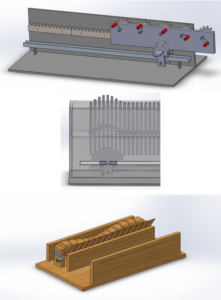
Design and create physical models to be used as teaching aids for longitudinal, Rayleigh, and transverse waves. These models are intended for high school teaching purposes.
Team: Braden Copland, Bryan Norton Tyler Webster (lead)
Faculty Advisor: Dr. Jacob Hochhalter
